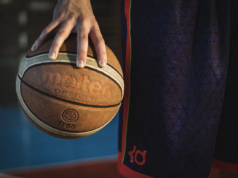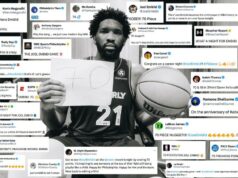This is the second in a three-part look at the big men the Spurs had during each of their championship seasons. A main focus for the Spurs this season was improving their frontcourt, and this will allow us to compare the current frontcourt to previous ones. Today we will look at the 2005 and 2007 championship teams. Part one can be found here.
2005
This was the Spurs first championship without David Robinson alongside Tim Duncan. After Robinson retired, the Spurs signed Rasho Nesterovic hoping that he could provide a defensive presence alongside Duncan. The Spurs also traded Malik Rose during the 2005 season to the New York Knicks for Nazr Mohammed, another seven foot big man the Spurs hoped could provide rebounding and blocks. Robinson and Duncan had created a blueprint for the Spurs big men and they were still trying to follow it.
However, the Spurs started to show a shift in how they approached their big men. Robert Horry was aboard now looking for another championship ring, and he brought a different skill set than any other Spurs big man in recent years. Horry could stretch a defense with his three point shooting but could still defend post players. When he was paired with Duncan, Horry was more of a power forward and Duncan shifted to center, which differed from when Duncan played next to Robinson, Nesterovic or Mohammed. 
While Nesterovic averaged 1.7 blocks and Mohammed averaged 1.4 blocks, neither had the defensive presence of Robinson. Nesterovic was slow footed and Mohammed did not have the basketball IQ to fit perfectly with Duncan. Horry might have been the Spurs second best post defender because of his crafty play and veteran know-how. Still, he gave up size against bigger post players.
On the offensive end, Nesterovic and Mohammed were also limited. Both averaged around 6 points during the season, and during the playoffs Nesterovic pretty much lost all his minutes to Mohammed, who averaged 7 points. Neither was a very good shooter, although Mohammed did have a nice playoff performance with 52.8% shooting, which was helped by the fact that he was more athletic and could get more dunks.
Once again, Horry’s offensive skill set was a departure from previous seasons. Neither Robinson nor Rose had three point range. The closest the Spurs had to a Horry-like player was Danny Ferry and that’s a big reach. Horry cemented his reputation as a playoff performer by averaging 9 points, 5 boards and hitting 44% of his threes during the playoffs, which were capped by an epic performance in game 5 of the NBA Finals. Pop liked that he could spread the court with another three point shooter around Duncan. The Spurs have tried to replicate their success with Horry through players like Matt Bonner or Anthony Tolliver but they haven’t found the right player.
This group of big men showed the Spurs trying to capture the success of starting a seven-footer alongside Tim Duncan while experimenting with a new type of player, the big man with range. Offensively and defensively this group was limited compared to 1999 or 2003. Nesterovic never developed into the permanent solution at center, and Mohammed had a nice run in the playoffs but proved limited offensively and in the basketball IQ department. Horry was the Spurs second best big man, which is interesting considering that he sometimes played more like a guard. The scoring, shooting and rebounds all took a drop this season for a number of reasons. Duncan’s numbers fell and his supporting cast in the post, while it had a few more options, probably was not as strong as past. Also, the Spurs relied more on Tony Parker and Manu Ginobili and less on the post players.
Stats are from 82Games.com and BasketballReference.com
| PTS | 37.3 |
| % of Team PTS | 38.8% |
| RBS | 25.7 |
| % of Team RBS | 60.6% |
| Blocks | 5.2 |
| FG% | 46.7% |
| % of Team FGA | 40.3% |
2007
The Spurs search for a consistent big man continued into 2007. They were still looking for an athletic big who could block shots and rebound, and this season Francisco Elson was their attempt. Horry was still around but he had slowed down significantly and he could not be relied upon. They tried to replicate their success with Horry by acquiring Matt Bonner, another big who could shoot threes, but he was inconsistent and not much of a post player. Then there was Fabricio Oberto, the long-haired Argentine without much physical skills besides being tall but had a high basketball IQ.
Just looking at this menagerie of big men it is obvious that the Spurs were reaching for an answer alongside the ever reliable Duncan. One could say that the Spurs had more depth than ever at the 4 and 5 spots since there were five big men playing over 10 minutes per game, something the Spurs had not had until this point. That would be confusing depth with a lack of reliability.
Horry is the only hold over, besides Duncan of course, from the 2005 championship team. However, his most notable accomplishment from the season was knocking Steve Nash into a scorer’s table and Suns Whine Fest 2007. Supposedly a playoff performer, Horry saw his minutes nearly double to 20 per game during the postseason but he was only contributed 4 points and 4 rebounds with merely average 35% shooting on threes. He was too old and too slow to be considered a reliable big man.
Elson showed promise with his athleticism, speed and a respectable jump shot. He started 41 games alongside Duncan and chipped in 5 points and 5 rebounds. However, his minutes were nearly halved down to 11 per game during the playoffs because, like so many Spurs big men before him, Elson lacked the basketball IQ Pop desired. He also caught the ball as well as a handless man, which is to say he couldn’t.
Then there was Oberto, who showed no jumping ability or discernable strength. Yet he was able to start alongside Duncan during the playoffs. Oberto understood the game of basketball well and knew where to position himself. He destroyed the Utah Jazz during the playoffs with well-timed cuts for easy layups. However, he was not much of a defender because of his lack of strength or speed but he was good enough to get by.
Of course Duncan anchored the post once again, turning in his final 20 point season to go along with 10.6 boards. His numbers were slipping at this point in his career and he was playing five less minutes per game while taking three less shots than in 2003. Still, he made the All-NBA and All-Defensive first teams. His team defense was stellar at this point and he showed in the NBA Finals that he was the league’s premier defender, keeping LeBron James out of the lane.
This was the weakest of all the Championship team big men. The next highest scorer after Duncan was Elson with five points. They lacked rebounding, blocking and scoring abilities. No plays were ever called for any of the big men besides Duncan and the Spurs continued to rely more heavily on the scoring of Parker and Ginobili.
| PTS | 36.4 |
| % of Team PTS | 37% |
| RBS | 25 |
| % of Team RBS | 61.4% |
| Blocks | 4.1 |
| FG% | 51.1% |
| % of Team FGA | 34.5% |
Bottom Line
The Spurs kept looking and looking for another big man like David Robinson who could defend other team’s best big man while chipping in 8 boards and 8-10 points. The search had moved from Nesterovic to Mohammed to Elson, but none fit the bill. They also experimented with big men who could shoot threes to some success. Horry came up big during the 2005 playoffs and cemented his legacy in the 2005 NBA Finals, but Bonner never proved consistent or a reliable enough defender. Each year the Spurs big men slowly became less and less important. Whereas in 1999 the team was defined by its post play, in 2007 it was defined by its guard play. Of course Duncan has been a constant throughout the Spurs championship run, giving his 20-10-3 on a regular basis to go with premier defensive abilities, but his support down low has steadily grown weaker.





